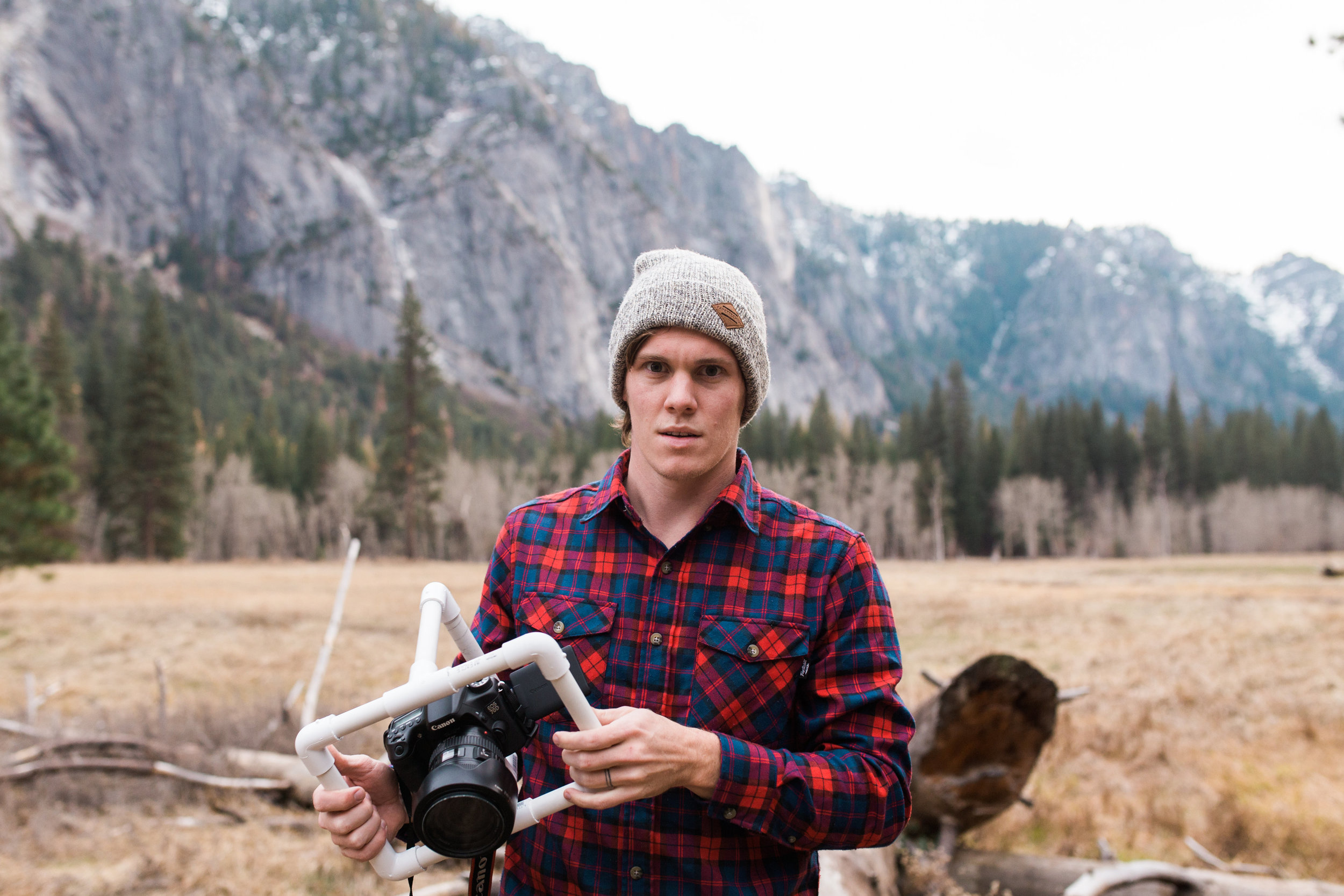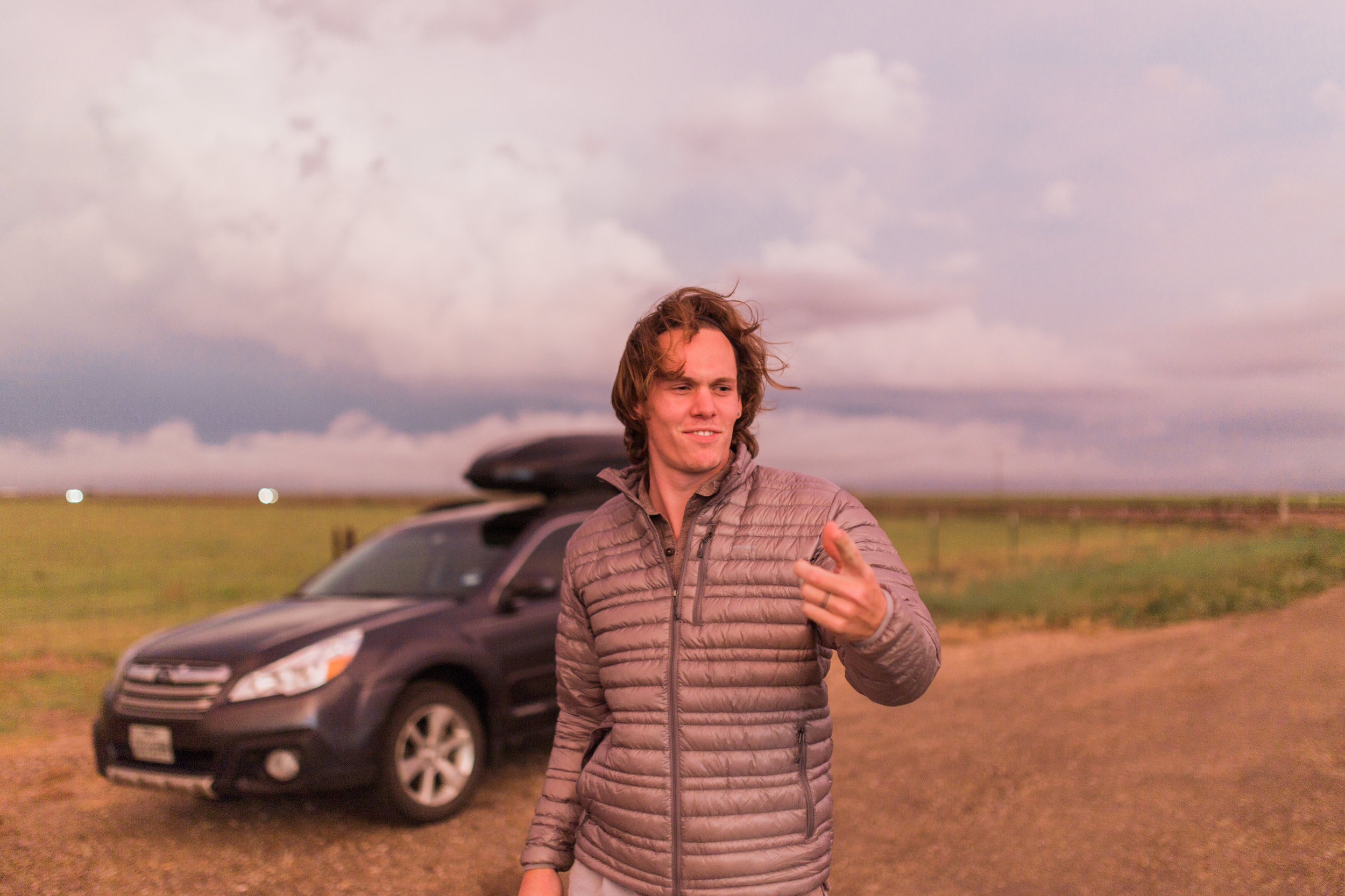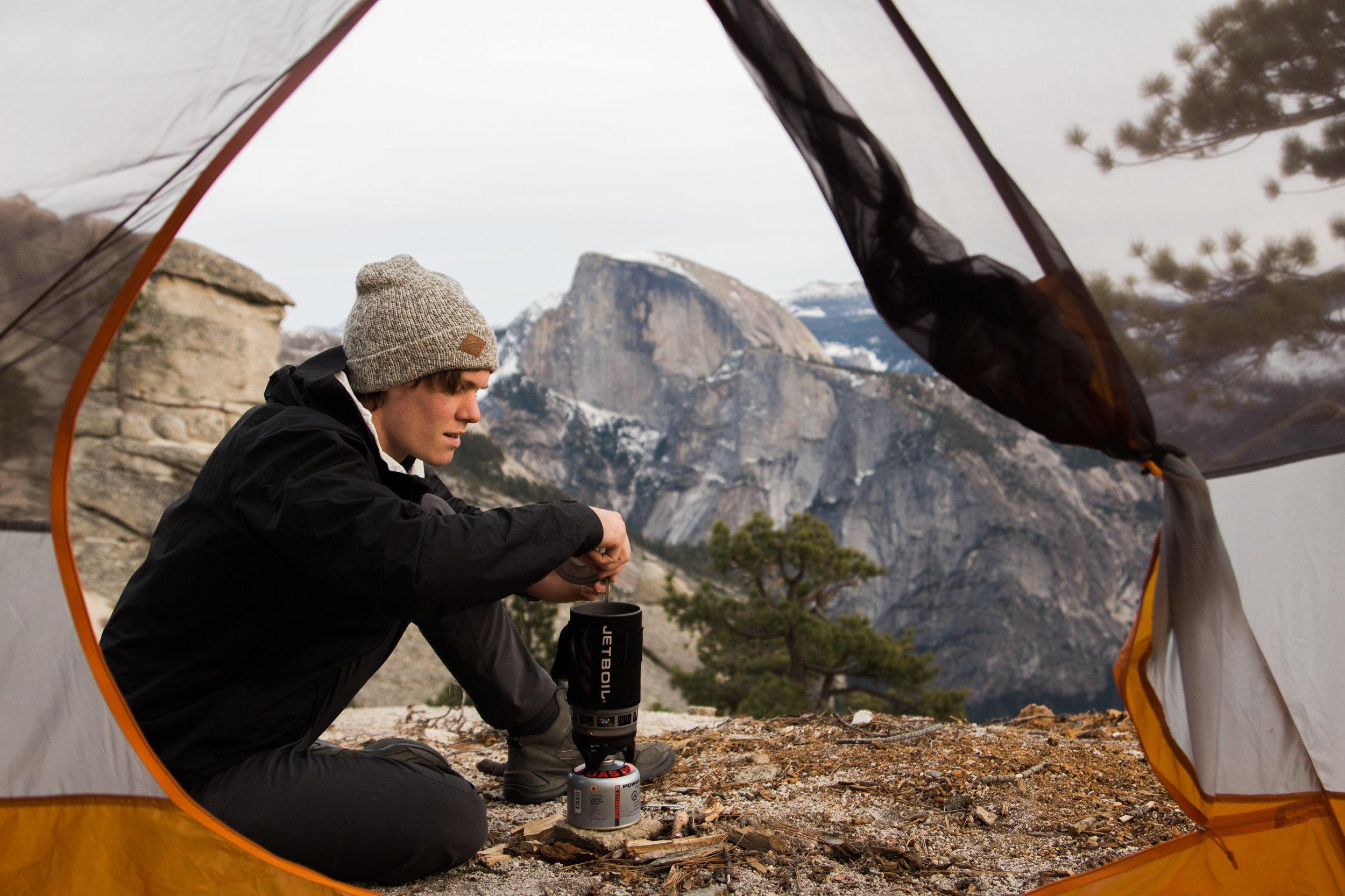advice for adventurers: clothing pt. 2
clothing for camping and exploring // callen's picks
This is Callen's post (about men's clothes), see Abbi's (for women) here.
I’m a big fan of technical gear, but a bigger fan of getting outside regardless of gear. Familiarizing yourself with clothing specifications and functions can really add to your comfort and endurance in the field. Marginally understanding apparel science enables one to operate in various environments intelligently and safely. Here’s my take on clothing advice.
WHAT I PACK AND WHY:
Patagonia Torrentshell Rain Jacket: Precipitation is one of the obvious elements you face outdoors. Staying dry is important for morale (in most cases) and safety in other cases. I like the Torrentshell because its packable (left zippered pocket), its relatively breathable H2No material, and its armpit ventilation zippers. Its also lightweight at 12.1 oz. so I’m more likely to toss it in my pack rather than risk a miserable soggy day. For backpacking treks I will also bring a pair of Marmot Precip rain pants. I like the full zip feature on the Precips because it ensures that I won’t have to take my boots off in the rain to get my pants on.
Merino Wool Socks: So I read Abbi’s post on clothing advice and immediately questioned the lack of a sock entry… For me, socks are super important. I hate for a blister or hotspot to affect my experience. My Smartwool Phd’s and Darn Toughs are the first items I lay out when getting ready for any type of trip. If you haven’t worn fancy $15+ socks I know I sound ridiculous, but do yourself a favor and get a pair. I know you will be putting your cotton junkers in the Goodwill pile within the week ;)
ExOfficio Underwear: These are the second items I lay out when packing for any trip. Cotton accumulates moisture and stench second to none. A wicking pair of undies is a game changer. Once again, the former will begin to migrate out of your arsenal once you pick up a pair of synthetics or merino wool.
Mongrel Shorts: Less is more when it comes to clothing in Texas. Comfortably stretchy, quick-drying, and moisture wicking, the mongrels are a no brainer for warmer environments. I can live out of these for a week and regret nothing. I’ll note from experience that the less is more motto is a good one to ingrain. When setting out for a hike especially, you’ve gotta think 1 mile into the trail. A brisk morning will tempt you to throw on your pants, or heaven forbid a base-layer and your pants, only to leave you in sweaty despair 10 minutes into a hike. You’re going to generate heat and you’re likely going to need less insulation than you imagine. Bring the insulation layers in your pack, just avoid the inevitable boot removal to change into shorts as you top the first switchback.
Charlie Flannel: No relation to sweet Charlie the dog, but I’ll second Abbi’s recommendation on brining a flannel when car camping and short day hiking. Flannels are comfy, versatile (rolling up sleeves/unbuttoning front to release heat), and look good for photos. Its not likely however, that I’d reach for a flannel when backpacking because they are heavy per weight/warmth ratio, don’t pack well, and normally don’t wick moisture very well.
Sun Protection: We spend a lot of time in the desert and getting a rowdy full body burn from trolling shirtless can take a toll on my overall morale regardless of the freedom of shirtless living. So I picked up a few dad-style long-sleeve UPF rated shirts. My favorite is probably the REI Sahara Tech Long-Sleeve. Its lightweight, comfortable and UPF 50+ rated. I like that the sleeves roll up and don’t constrict my massive bi’s… Lets be honest, fewer severe sunburns reduce risk of skin cancer, and reduce mothers’ warnings of risk of skin cancer. Win Win.


COLD TEMPS (BELOW 50, SNOW, CHILLY EVENINGS):
Sleeping PSA: The EN rating on your sleeping bag is scientific. Basically a robot dude/chick is placed in the bag and monitored for its core heat over a period of time. That dude/chick robot is wearing socks, base-layer pants and top, and a beanie. If you are not wearing these items when you’re in your bag, you will not be as warm as the robot. Here’s a link explaining the EN rating.
Patagonia Ultralight Down Jacket: I wanted chrome. Sue me. I picked up this down jacket on ebay for $70 or so to replace a synthetic puffer that has lost heat retention over the years. I was hesitant to go with down because of its hydrophobic nature, but have been won over by its incredible weight/warmth ratio. Weighing in at 9 ish ounces this thing is gnar. Incredibly warm, non-constrictive, and as previously mentioned CHROME (silver by most people’s standards…) As for the hydrophobia, a rain-jacket is really the best way to stay comfortable in wet environments. Yes, you can longboard in a downpour with your TNF Thermoball and act like you’re comfortable whilst destroying your deck, but I’ll be watching from the sidelines as you strip off your mess of a synthetic puffer to get dry. The Patagonia Ultralight is packable and decent for a backpacking pillow.
Base-layers: I sport a pair of Patagonia Capilene 2 pants and a ¼ Smartwool mid-weight top (REI garage sale score). Honestly, I’ll pick up some mid-weight merino wool pants down the line. I like the ¼ zip feature for the top because it gives me the option of venting out heat without changing clothes and the zipper on the Smartwool is hardly noticeable even as a stomach sleeper.
Beanie: The EN robot is wearing one so I recommend you do the same on those colder nights. I sport either a synthetic Marmot beanie or a wool beanie from Fayettechill.





